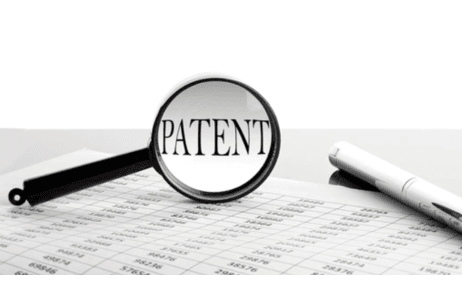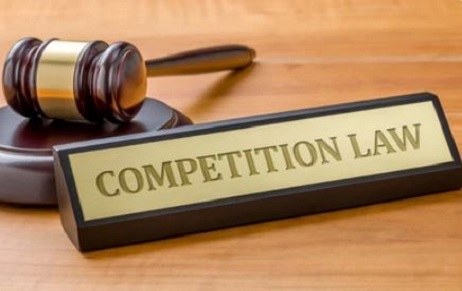Introduction In the realm of obtaining a patent right, conducting a ‘novelty search’ stands as…
Frand-ing Licenses and Its Implication in Landmark Cases in India
Every day, a number of products are being invented all over the world, some cascading over the improvement of existing inventions, and the others, portraying a unique set of methods and products unknown to man at large. Simultaneously, there is an eruption of infringements that remain unnoticed or noticed following an incredulous load of proceedings and exorbitant costs. It is essential to protect the rightful rights of these owners against such infringements and unlawful interference to avoid any possible losses or damages in the peaceful functioning of their entities. In the field of protection of inventions, the adoption of the Agreement of Trade-Related Aspects of Intellectual Property Rights (TRIPS) and the Patent Act, 1970, and related amendments aim to let these owners benefit from their inventions without any unnecessary disturbance.
1. DEFINING STANDARDS
In our day-to-day activities, we try to sculpt our needs as per certain benchmarks to achieve our desired results. Similarly in the field of patents, every invention requires certain targets to abide by in order to facilitate an irreplaceable position in the market. To put it technically, standards are technical specifications that seek to provide a common design for a product or process. Ensuring that the products conform to standards facilities almost definite reliability, quality, stability when purchasing the products, and subsequently, an increase in their demand. To lay it down simply, a standard is a document that exhibits certain requisites for a particular product, element, system, or service or elaborately describes a specific method. Formal standards are declared by Standard Setting Organizations (SSOs) and include establishments such as the European Telecommunications Standards Institute (ETSI), Institute for Electrical and Electronics Engineers (IEEE), and various other ad hoc informal organizations. Standards can also be of two different kinds- those with are mandatory or those that are up to one’s discretion.
2. STANDARD ESSENTIAL PATENTS
The concept of Standard Essential Patents (SEPs) cropped up when controversies between smartphone giants came about. Standard Essential Patents are basically, patents that inform the users or anyone else that the particular invention conforms to a particular standard denoted by that patent. SEP was also defined by the Washington District Court in Microsoft Corp. v Motorola Mobility, Inc., as “A given patent is essential to a standard if the use of the standard required infringement of the patent, even if acceptable alternatives of that patent could have been written into the standard”. It is a universal truth that consumers prefer standard-compliant products as they deliver an incorrigible quality. Thus, in order to save a spot in the demand market, the inventors are forced to adopt technologies conferred by Standard Essential Patents. In turn, these SEP holders gain a huge competitive edge in the market and do not face any competition until they expire and move into the public domain.
3. FAIR, REASONABLE AND NON-DISCRIMINATORY TERMS (FRAND)
Due to the ubiquitous yearning for snowballing sale of one’s products, the market players are in a constant struggle to find the most desirable, the most profitable, and the most economically efficient techniques to garner demand for their brands. For this reason, SEPs play an unparalleled role to fulfill such wishes of the inventors. However, this also means that they have unbridled power in the market. Creating a monopoly of such SEP holders would be detrimental to the inventors, as they will have no say in the unfair and discriminatory terms brought before them. They will be forced to succumb to such terms for meeting the primary objective of every company in the market. There are a number of issues that arise during the event of licensing SEPs to other companies that inevitably cause a disruption in the unadulterated functioning of licenses in the country. A commonly occurring issue is patent holdup when a SEP holder realizes his irreplaceability in the market and consequently, causes a rise in the royalty rates to order to unjustly profit from his dominance, thereby burdening the licensee companies. Another frequent issue is royalty stacking where the companies are forced to pay for all the patents held by the SEP holder, patents that are not even incorporated by them in their products, purely under the coercion by the SEP holders of revoking the license
Hence, in order to evade such prejudiced demands of the SEP holders, the concept of FRAND was incorporated. The SSOs stress the requisite for such holders to enter into a promise to not cultivate any unwanted competitive strategies and misuse of the power granted to them. This promise is to coincide with the FRAND terms. Following the licensing strategies stated under the FRAND terms forms the basis of the standard development process. Conformance to FRAND terms guarantees that the SEP holders do not abuse their dominant position in the market and they license SEPs to desire companies in a ‘fair, reasonable, and non-discriminatory’ manner.
4. THE ERICSSON AND MICROMAX CASE
On the 4th of March, 2013, Ericsson filed a case of patent infringement against Micromax for eight of its SEPs which related to its 2G, 3G, and EDGE devices, in the Delhi High Court. In response, on the 19th of March 2013, the Court passed an order stating that both the companies would enter into a contract under FRAND terms for the next month purely under an ad-interim arrangement, with prescribed royalties given in the table below.
A mediator was appointed to resolve the disputes between the two companies, but it was in vain. As a result, on the 24th of June 2013, Micromax filed information under Section 19(1)(a) of the Competition Act, 2002, alleging Ericsson to have inculcated an abusive and unfair mode of setting royalties. On the 12th of November 2014, the Court agreed to a new set of interim arrangements for the parties wherein Micromax was asked to pay the royalty on different terms given in the table below.
| Phones/devices | Capable of GSM | Capable of GPRS + GSM | Capable of EDGE+ GRPS+GSM | WCDMA/HSPA, calling tablets | |
| From 19/03/2013(earlier interim order) | 1.25% of the sale price | 1.75% of the sale price | 2% of the sale price | 2% of the sale price | Dongles or data cards- USD 2.50 |
| From the date of filing till 12/11/2015 (later interim order) | 0.8% of the net selling price | 0.8% of the net selling price | 1% of the net selling price | 1% of the net selling price | |
| From 13/11/2015 to 12/11/2016 | 0.8% of the net selling price | 0.8% of the net selling price | 1.1% of the net selling price | 1.1% of the net selling price | |
| From 13/11/2016 to 12/11/2020 | 0.8% of the net selling price | 1% of the net selling price | 1.3% of the net selling price | 1.3% of the net selling price |
With regard to the complaint filed by Micromax, it was stated that Ericsson was allegedly demanding an unfair royalty for its SEPs relating to the GSM Technology. It contended that the royalty should be based on the patents relating to the chipset technology and not arbitrarily calculate the royalty as a percentage of the sales price of the licensed downstream product. It also stated that Ericsson was confident that there was no alternate technology for its patents in the market and hence, Ericsson believed that it had the right to charge such royalty for its patents. Moreover, Ericsson also wanted Micromax to sign a Non-Disclosure Agreement, which was restrictive and was not in conformance with the FRAND terms. On the 12th of November 2013, under Section 26(1) of the Competition Act, 2002, in pursuance of the complaint filed by Micromax, the CCI laid down the following:
- Ericsson was the largest holder of SEPs in the country with regard to 2G, 3G, and 4G patents used for smartphones, tablets, etc. Due to this, it undoubtedly held a dominant position in the market for devices that use the GSM and CDMA standards.
- While FRAND licenses were primarily meant to prevent the patent hold-up and royalty stacking, the competitive endurance showcased by such SEP holders might prove detrimental to their integrity.
- Ericsson’s royalty rates were excessive and absurd, and these royalties had no linkage to the patented products. Thus, it was clear that there were discriminatory and contrary to the FRAND terms.
Due to these inferences, CCI ordered an investigation on the same matter by the Director-General, which was challenged by Ericsson in the court. What happened to the case from this point shall be discussed in detail in combination with two other cases with Ericsson.
5. ERICSSON AND INTEX CASE
In 2013, Intex had filed a suit against Ericsson on the same terms as in the case of Micromax, about setting discriminatory and unreasonable royalties for the SEPs. The CCI, on its account, ordered an investigation along with the complaint filed in the previous case. Ericsson filed a writ petition against this move for an investigation. Alongside this, it filed a suit against Intex for the alleged patent infringement of the same eight patents and demanded damages of Rs. 56 crores.
6. ERICSSON AND BEST IT WORLD (INDIA)
In November 2011, Ericsson had sent a letter to Best IT World that it had infringed the same eight patients as in the previous cases due to its GSM and WCDMA related products. Ericsson suggested both the companies get into a Global Patent Licensing Agreement (GPLA) for all the infringed patents. Best IT stated that it was interested in entering the said agreement only under the condition that Ericsson discloses the alleged infringed patents in order to find out whether the allegations were valid and enforceable in the country. Ericsson intentionally refused to respond to that request and went ahead to impose the need to draft an NDA with ten years confidentiality agreement wherein all the confidential information would be shared only with the company affiliated to it, and any disputes arising out of the same would be settled in Stockholm, Ericsson’s location of its headquarters, which was evidently onerous and one-sided. It further stated that the license agreement to be entered into would have to apply to the previous and future sale of the company. In September 2015, Best IT filed a suit under Section 4 of the Competition Act, 2002 against Ericsson for an abuse of dominant position.
Thus, as occurred in the cases above, the CCI ordered for an investigation to take place. Ericsson challenged the order of CCI and claimed that the order was ‘arbitrary in nature and without jurisdiction’. It was noticed by the Delhi High Court that the plea by Best IT ought to be disregarded as it had not entered into the licensing agreement with Ericsson and that it was evident that it used Ericsson’s SEPs.
ANALYSIS OF THE ABOVE ERICSSON CASES
Extracting the detail from the Micromax v Ericsson case, Intex v Ericsson case, and Best IT World (India) v Ericsson case about Ericsson filing writ petition against the order of CCI for investigations, as per the judgment laid down by the Delhi High Court on the 30th of March 2016, the CCI had the authority to direct the investigations as in the event of an abuse of dominance, jurisdiction lies within the scope of Competition Act. The court agreed to use the net sales prices of the downstream product as the royalty base and ordered that the royalty for licenses based on FRAND must be derived from sound economic reasoning.
In the Micromax case, the court ordered Micromax to pay the royalties as per the rates stated in the later interim order, rates mentioned in the table.
By the judgment delivered on the 13th of March, 2015, the Delhi High Court ordered that the royalties which were stated in the case of Ericsson v Micromax shall be applicable in this case too. The only difference that lies is that the court-ordered Intex to pay 50% of the royalty as per total selling price per device and not chipset, from the date of filing of the suit till 1st of March, 2015, shall be paid directly to Ericsson by way of a bank draft within four weeks from the date of the judgment. The balance shall be secured with a bank guarantee within the said four weeks with the Registrar General, who would invest the same in an FDR for twelve months.
As per the order passed on the 2nd of September, 2015, the court declared that Best IT World must restrict importing mobiles, handsets, devices, tablets, etc. all articles that infringe the patents of Ericsson, which would be operative from the 9th of September, 2015.
7. ERICSSON AND XIAOMI TECHNOLOGY
Ericsson had filed a patent infringement suit for eight of its patents essential to 2G and 3G standards registered in India, against Xiaomi in December 2014. Ericsson had requested to obtain a license from it before it sold the infringing products in India, but Xiaomi had entered into an agreement with Flipkart Internet Private Limited to sell the products under Xiaomi’s name. It had begun launching such products from the month of July 2014. Subsequently, the court had issued an injunction order against Xiaomi to restrain the import or sale of its infringing device. Xiaomi appealed to the injunction stating that it had entered into a ‘Multi-Product License Agreement’ with Qualcomm Incorporated and used the chipset, which in turn was licensed to Qualcomm by Ericsson. Thus, it argued that it had not infringed any of Ericsson’s patents. As an interim measure, on the 16th of December 2014, the court allowed Xiaomi to sell only those devices that contained the chipsets, which were licensed by Qualcomm and had to deposit Rs.100 per device with the Registrar General of the Delhi High Court.
On the 22nd of April, 2016, the Court revoked the interim injunction on Xiaomi on account of concealment of significant information regarding the alleged infringing patents, by Ericsson. It laid down that Xiaomi was using the 3G patents licensed by Qualcomm, which in turn was licensed to it by Ericsson. The amount of royalty paid by Xiaomi to Qualcomm was provided to Ericsson as royalty and hence, there lay no requirement of paying royalty directly to Ericsson.
8. ERICSSON AND LAVA INTERNATIONAL PRIVATE LIMITED
Ericsson challenged Lava in a suit for patent infringement related to its AMR, GSM, and EDGE technologies. On an order passed by the Delhi High Court in March 2015, both the companies tried to negotiate an agreement on FRAND terms but it was in vain. An interim order was passed by the Delhi High Court, operative from the 21st of June, 2016, ordering an injunction to prevent the import, export, manufacture, and sale of mobile phones that use the concerned patents of Ericsson. The final order on the case is still pending before the Court.
With the judiciary at the brim of delivering justice to the deserving, the SSOs and various organization striving to protect the rights and inventions of the lawful owners, the Intellectual Property Appellate Board to discuss matters of concern of the distressed, and the laws on various aspects merging to bridge the gap between the people and justice, it is almost impossible to fathom a situation wherein the aggrieved parties could not be redressed. The only aspect which has to be looked into by these mechanisms is its clear and untainted practice. The salvo of the dominance and power of multi-national companies being fired at domestic companies who strive to maintain a position in the market has to be adjudicated in a fair manner, without any involvement of duress and coercion. The elixir of righteousness lies in the hands of these deciding authorities. The real question here is ‘Would the adjudicators choose impartiality and morality, or would they surrender to dominance?’
About the Author: Ms. Anjana Mohan, Symbiosis Law School, Pune, an intern at Khurana and Khurana, Advocates and IP Attorneys. Views expressed in this article are sole of the intern and do not reflect the views of either of any of the employees or employers. Queries regarding this may be directed to [email protected].



